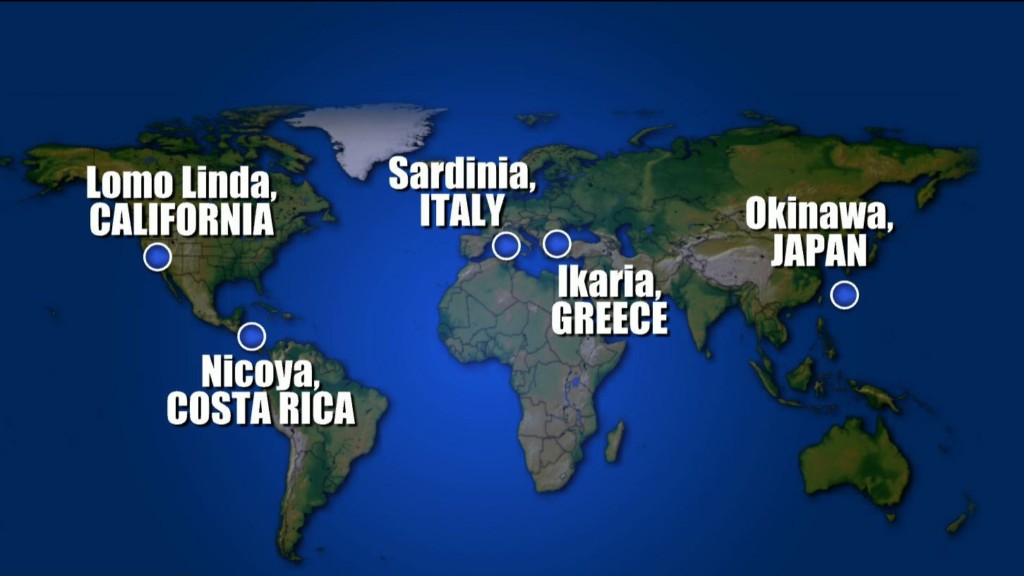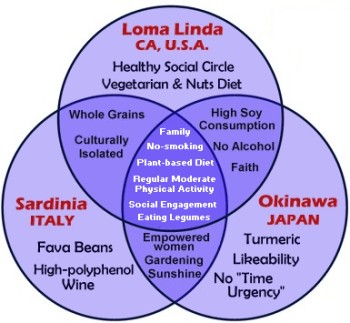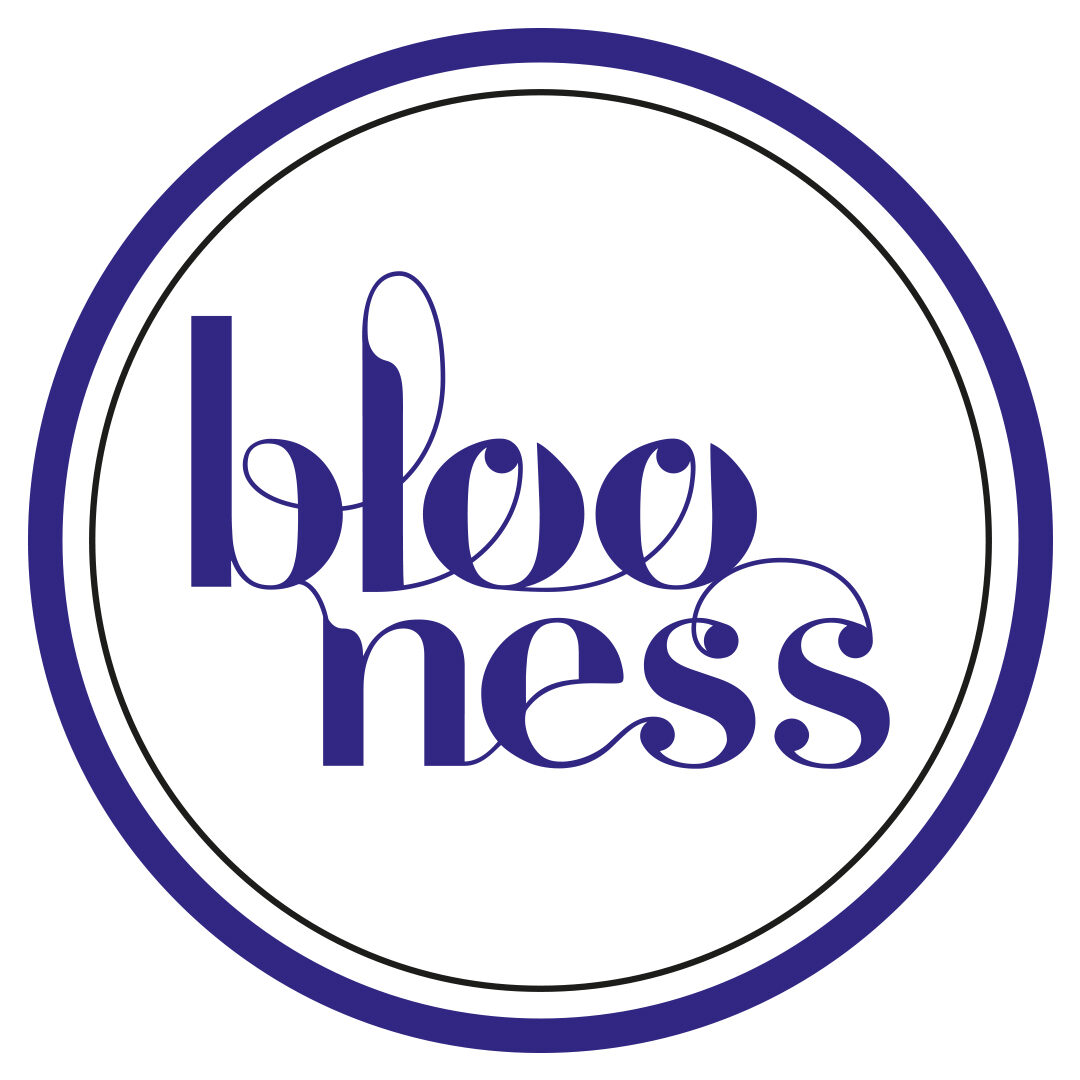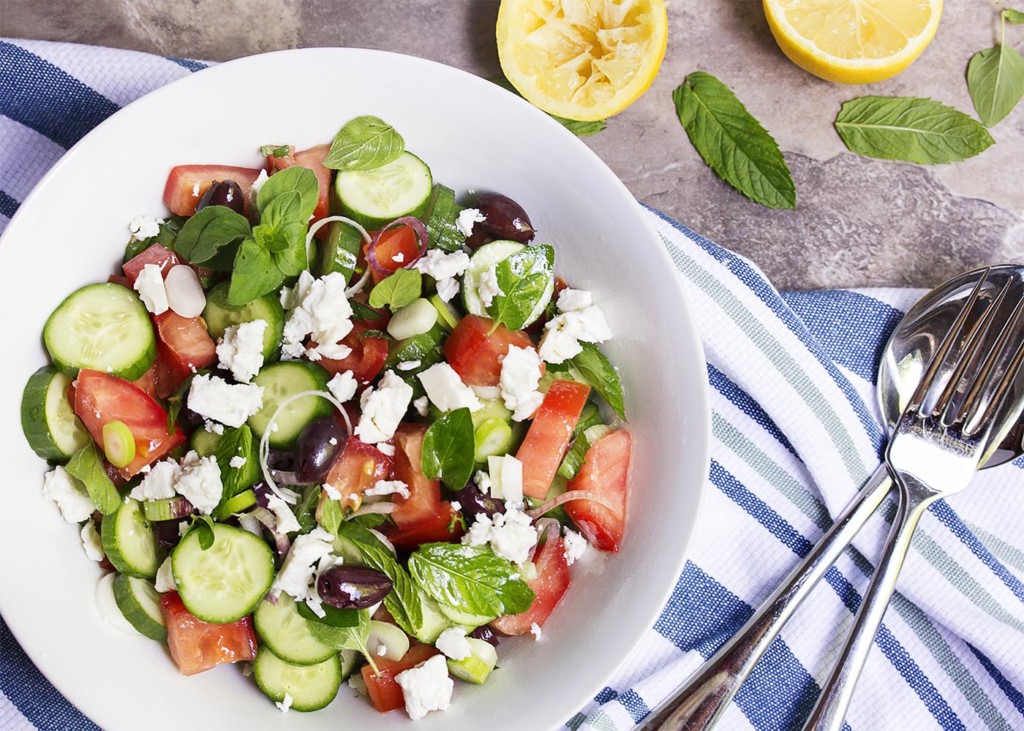What if, by compiling the eating habits of people living in "blue zones" - those parts of the world where life expectancy far exceeds the global averageand where "civilization diseases" (diabetes, cancer, hypertension, thyroid, etc.) are rarer than elsewhere, were we able to keep up with their longevity?
Defining Blue Zones
First of all, let's define what a "Blue Zone" is.
The Blue Zones are a concept brought to light by Italian academic Gianni Pes and Belgian demographer Michel Poulain, when they drew in blue ink on a map an area grouping together various villages in the province of Nuoro, Sardinia, where an extraordinary concentration of centenarians was found.

Since supported by National Geographic SocietyIn 2002, a project was launched to identify other blue zones around the world.
Since then, 4 main zones have been considered "blue":
This content is part of the guide Blooness, the guide to the ideal human diet, the summary of which you can find here 🌱🥑
- The Greek island of Ikaria
- the Japanese island of Okinawa
- Nicoya Peninsula, Costa Rica
- The Seventh-Day Adventist community in Loma Linda, California
The concept of extended Blue Zones
In addition to the Blue Zones recognized as such, we have also identified other areas free of certain diseases known in the West, and where life expectancy is remarkably higher than in neighboring regions:
- Kitava Island, New Guinea
- Certain areas of India
The common base of blue zones, in terms of lifestyle
Inhabitants of the Blue Zones - Okinawa, Sardinia, Nicoya, Icaria and Loma Linda - share characteristics that may contribute to their longevity.
French-speaking subscribers will receive the newsletter in French, and all others will receive an English version.

At least that's what Dan Buettner empirically found in his book "The Blue Zones", in which he lists 9 common characteristics:
- Moderate, regular physical activity throughout your life.
- Calorie restriction.
- Semi-vegetarianism, where food comes largely from plants.
- Moderate alcohol consumption (especially red wine)
- Giving meaning to life.
- Reduce stress.
- Commitment to spirituality or religion.
- The family is at the center of life.
- Social commitment, community integration.
- Sunny, well-ventilated areas.
Focus on the different diets of Blue Zones
Based on the lifestyles, and above all the dietary habits, of the inhabitants of these areas where longevity is breaking records, we can draw up a list of the best allies for our health. This is what I propose in this new series of chapters dedicated to the ideal human diet, a summary of which can be found here.
- The Mediterranean diet
- The Okinawa diet
- Ikaria island diet
- Food consumption on the Nicoya Peninsula
- The Loma Linda diet
- The regime on Kitava Island, New Guinea
- Regime in certain areas of India
Blooness = LCHF + Paléo + Blue Zones
Now that you know all about feeding Blue Zones, find out more about LCHF power supply and on the paleo dietAfterwards, you can read about our findings that led to the development of the Blooness diet.
Next chapter: Vegetables in the Mediterranean diet
Previous chapter: Introduction to the Mediterranean diet
Reminder: Learn to quantify protein, carbohydrate and fat intakes for the best possible health and figure - [MEMBERS AREA]


One Response
Thanks for this post.
It gives a good idea of what our general quality of life should be.
Nutrition is important, but so is everything else, for a balanced life... and maybe living to be a centenarian =)